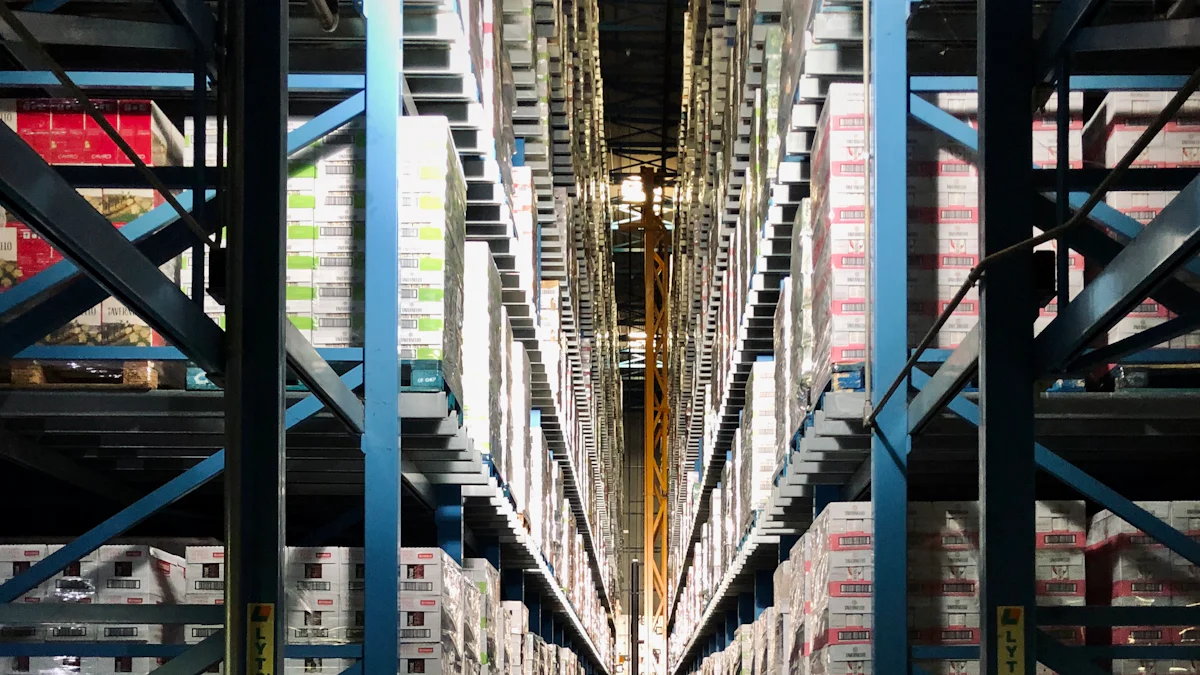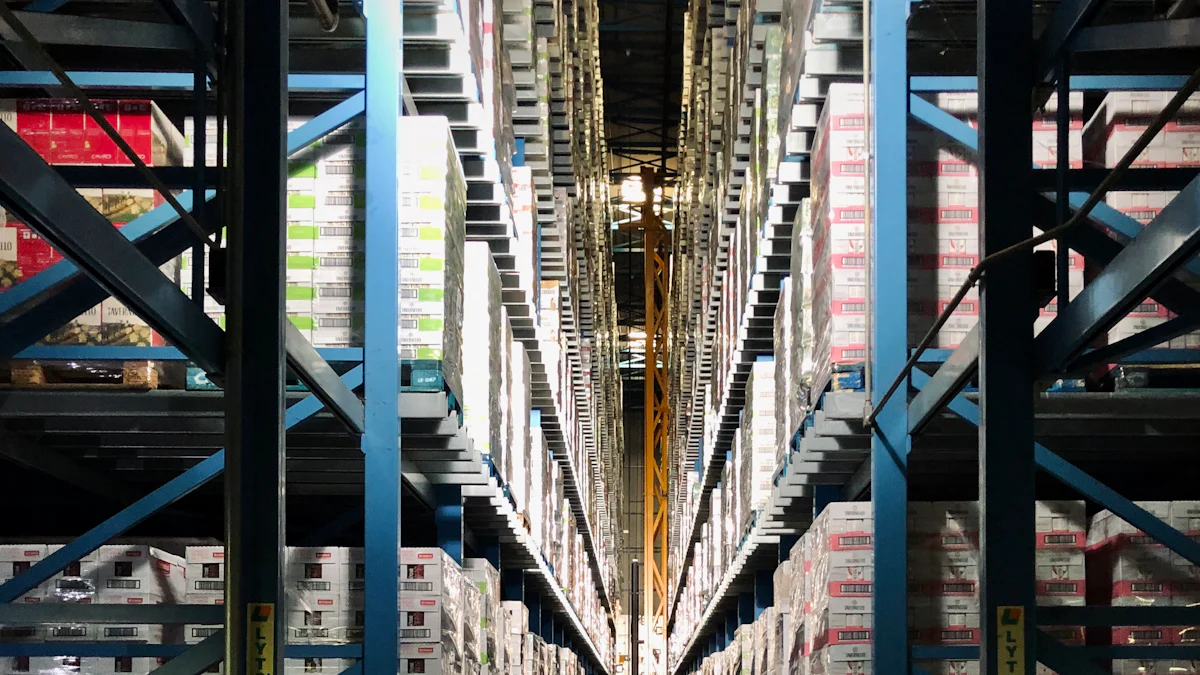The Economics of Supply Chain Cost Optimization

Effective supply chain cost management is a critical aspect of any successful business operation. By understanding and optimizing the expenses involved in the supply chain, companies can enhance profitability and maintain a competitive edge in the market. This blog aims to delve into the intricacies of supply chain cost optimization, providing insights into strategies that can drive significant cost savings. Let's explore the fundamental importance of managing supply chain costs and navigate through practical approaches for achieving financial efficiency.
Understanding Supply Chain Costs

In the realm of supply chain management, supply chain costs play a pivotal role in determining the financial health and operational efficiency of a business. By comprehending the intricacies of these costs, organizations can make informed decisions to streamline their processes and enhance profitability.
Definition and Components
When dissecting supply chain costs, two primary components come into play: Direct Costs and Indirect Costs.
Direct Costs
Direct costs are expenses that can be explicitly traced back to the production or acquisition of goods or services. These include raw materials, labor costs, manufacturing expenses, and transportation fees. For instance, Deere & Company's supply chain cost-management achievements led to a significant inventory decrease of $1 billion, showcasing the impact of effectively managing direct costs.
Indirect Costs
On the other hand, indirect costs are more elusive as they are not directly tied to specific products or services but still contribute significantly to overall expenses. Examples of indirect costs encompass overhead expenses, administrative salaries, utilities, and maintenance fees. AGCO's European logistics solution exemplifies how strategic cost management can lead to substantial reductions in freight expenditure and enhanced network performance.
Total Cost of Ownership (TCO)
Total Cost of Ownership (TCO) serves as a comprehensive method for evaluating all expenses associated with every activity along the supply chain.
Importance of TCO
Understanding the importance of TCO is crucial as it provides a holistic view of all cost elements involved in delivering a product or service to customers. By considering not only direct purchase costs but also indirect expenses like maintenance and support, businesses can make more informed decisions regarding their supply chain operations.
Calculating TCO
Calculating TCO involves meticulous analysis and consideration of various cost factors throughout the entire lifecycle of a product or service. By factoring in aspects such as acquisition costs, operating expenses, maintenance fees, and end-of-life disposal costs, organizations can gain a clearer understanding of the true financial implications associated with their supply chain activities.
Impact on Business
The impact of effective supply chain cost management reverberates throughout an organization's operations and competitiveness in the market.
Profit Margins
By optimizing supply chain costs, businesses can bolster their profit margins by reducing unnecessary expenditures and enhancing operational efficiency. This was evident in Deere & Company's achievement of annual transportation cost savings amounting to around 5%, showcasing the tangible benefits derived from prudent cost management strategies.
Competitive Advantage
Furthermore, adept management of supply chain costs confers a competitive advantage upon organizations by enabling them to offer competitive pricing while maintaining quality standards. AGCO's success in reducing inbound logistics costs by 28% underscores how strategic cost optimization can elevate an organization's market position.
Strategies for Cost Optimization
Procurement Process Improvement
Enhancing supplier relationships is a fundamental aspect of procurement process improvement. By fostering collaborative partnerships with suppliers, organizations can negotiate better terms, secure competitive pricing, and ensure a reliable supply chain. Bulk purchasing is another strategic approach to cost optimization. Leveraging economies of scale through bulk orders enables businesses to benefit from discounted prices and reduced per-unit costs.
Inventory Management
Implementing the Just-In-Time (JIT) inventory system is a proven method for minimizing excess inventory holding costs. By synchronizing production with demand, organizations can reduce storage expenses and enhance operational efficiency. Maintaining optimal safety stock levels is equally crucial in inventory management. Balancing the need for buffer inventory with cost-effectiveness ensures continuity in supply without incurring unnecessary carrying costs.
Technology and Automation
Harnessing the power of data analytics revolutionizes supply chain decision-making processes. By analyzing historical trends, demand forecasts, and market insights, businesses can make informed choices that drive cost savings and operational improvements. Embracing automation tools streamlines repetitive tasks, enhances productivity, and minimizes human error in supply chain operations.
Successful long-term cost management within your organization requires a strategic blend of procurement process enhancement, efficient inventory practices, and technological advancements.
Future Trends in Supply Chain Cost Management

Sustainability
In the realm of supply chain cost management, sustainability emerges as a pivotal trend shaping the future landscape. Embracing Green Logistics practices is essential for reducing environmental impact and enhancing operational efficiency. By optimizing transportation routes, utilizing eco-friendly packaging materials, and minimizing carbon emissions, businesses can align their supply chain operations with sustainable principles.
Green Logistics
Implementing environmentally conscious strategies within logistics operations is paramount for achieving long-term sustainability goals. Leveraging renewable energy sources such as solar power or wind energy to fuel transportation fleets can significantly reduce reliance on fossil fuels and decrease overall operational costs. Moreover, adopting circular economy principles by promoting recycling and waste reduction further contributes to a greener supply chain ecosystem.
Renewable Energy
The integration of renewable energy sources into supply chain infrastructure marks a progressive shift towards sustainable practices. Investing in solar panels for warehouse facilities or utilizing biofuels for transportation vehicles not only reduces carbon footprint but also establishes a more resilient and environmentally friendly supply chain network. By prioritizing renewable energy initiatives, organizations can foster a culture of sustainability while driving cost-effective solutions.
Digital Transformation
As technology continues to revolutionize the business landscape, digital transformation stands out as a key driver of innovation in supply chain cost management. Leveraging cutting-edge technologies like Blockchain and AI (Artificial Intelligence) empowers organizations to optimize processes, enhance transparency, and mitigate risks within their supply chains.
Blockchain
The implementation of blockchain technology offers unparalleled security and traceability in supply chain operations. By creating immutable records of transactions and ensuring data integrity across the network, blockchain enhances trust among stakeholders and minimizes fraud risks. Smart contracts enabled by blockchain streamline contractual agreements, automate compliance procedures, and facilitate seamless interactions between partners.
AI and Machine Learning
Harnessing the capabilities of AI and machine learning revolutionizes decision-making processes within supply chain management. Predictive analytics powered by AI algorithms enable real-time forecasting of demand patterns, inventory optimization, and proactive risk management strategies. By leveraging machine learning algorithms to analyze vast datasets, organizations can uncover valuable insights that drive operational efficiencies and cost savings.
The convergence of sustainability initiatives with digital transformation paves the way for a more resilient and agile supply chain ecosystem.
Recap of key points:
Optimizing supply chain costs through strategic management enhances profitability and operational efficiency.
Total Cost of Ownership (TCO) analysis provides a comprehensive view of all expenses along the supply chain.
Strategies like procurement process improvement, inventory management, and technology integration drive significant cost savings.
Importance of continuous improvement:
Continuous improvement is ingrained in the organization's operations, fostering ongoing learning and innovation.
Commitment to continuous improvement significantly contributes to an efficient supply chain by optimizing resource usage and streamlining operations.
Future outlook and recommendations:
Embracing sustainability practices like Green Logistics and renewable energy will shape the future of supply chain cost management.
Leveraging digital transformation technologies such as Blockchain and AI empowers organizations to optimize processes and enhance transparency for a resilient supply chain ecosystem.
See Also
Transforming Transportation: The Influence of Supply Chain Advancement
Efficient Enhancements for Technology Manufacturing's Supply Chain Challenges
Does Your Supply Chain Operate Effectively? Discover Today!
JUSDA's Logistics Enhancement: Redefining Efficiency
Constant Readiness: JUSDA's Risk Mitigation for Strong Supply Chains
